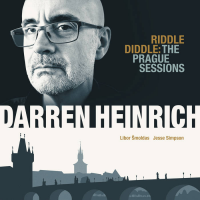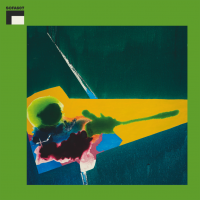Home » Jazz Articles » Album Review » Boom Box: Jazz
Boom Box: Jazz
And all of this has everything to do with the manner in which Borgmann inhabits the wonderland of his saxophones with the Boom Box trio. His voice is lithe and his fingering on the buttons so nimble that the notes he plays seem like pixies, alive and dancing on the very notes of each melody. Borgmann, of course sees a bird doing all of these wonderful things with the melodies, while he skips and floats on soprano and sopranino saxophones, effortlessly skittering up impossible high and equally unimaginable low tones on each of the high horns. Even on tenor, Borgmann's touch is deft, almost glancing, as he crafts the narrative that follows his imaginary bird, the very personification of Dolphy—and anyone who graced the visions of the avant-garde playing a straight or curved horn, from sopranino to tenor. The bird image, and the fluttering, soaring of the idiom of jazz itself, meet here, on the shimmering glacier of Borgmann's music.
So, whether it is all about the bird or all about jazz ultimately does not matter. In the end, it is all about the profound beauty of where music and life meet. Borgmann's prophetic conversations with bassist Akira Ando and drummer Willi Kellers regarding the mighty flight of the avian being are a parallel to how music captures the downward spiral of blue sorrow and the upward spiral of the joy that follows with equal majesty and splendor. The fact that "Little Birds May Fly" is a precocious song about the very flock of living songbirds that make up a jazz tune is a masterstroke. The playful nature of the music may sometimes be misleading, as this is a very serious journey, indeed. It is a reminder that ears are a pathway to the mind, which is a pathway to the soul. That is the real answer to the question-in-song, "And To Where?"
So it is back to Dolphy and his prophecies about the vanishing nature of music's beauty. The same fleeting beauty of magical birdsongs is in "Albert & Frank" as in "Only for Dörte"—and then it's gone...
Track Listing
Little Birds May Fly; How Far Can You Fly?; Hey Little Bird; And To Where?; Albert & Frank; Only for Dörte.
Personnel
Thomas Borgmann
woodwindsThomas Borgmann: tenor, soprano amd sopranino saxophones, harmonica; Akira Ando: double-bass; Willi Kellers: drums.
Album information
Title: Jazz | Year Released: 2011 | Record Label: Jazzwerkstatt Berlin-brandenburg E.v.
Tags
PREVIOUS / NEXT
Support All About Jazz
 All About Jazz has been a pillar of jazz since 1995, championing it as an art form and, more importantly, supporting the musicians who make it. Our enduring commitment has made "AAJ" one of the most culturally important websites of its kind, read by hundreds of thousands of fans, musicians and industry figures every month.
All About Jazz has been a pillar of jazz since 1995, championing it as an art form and, more importantly, supporting the musicians who make it. Our enduring commitment has made "AAJ" one of the most culturally important websites of its kind, read by hundreds of thousands of fans, musicians and industry figures every month.



















